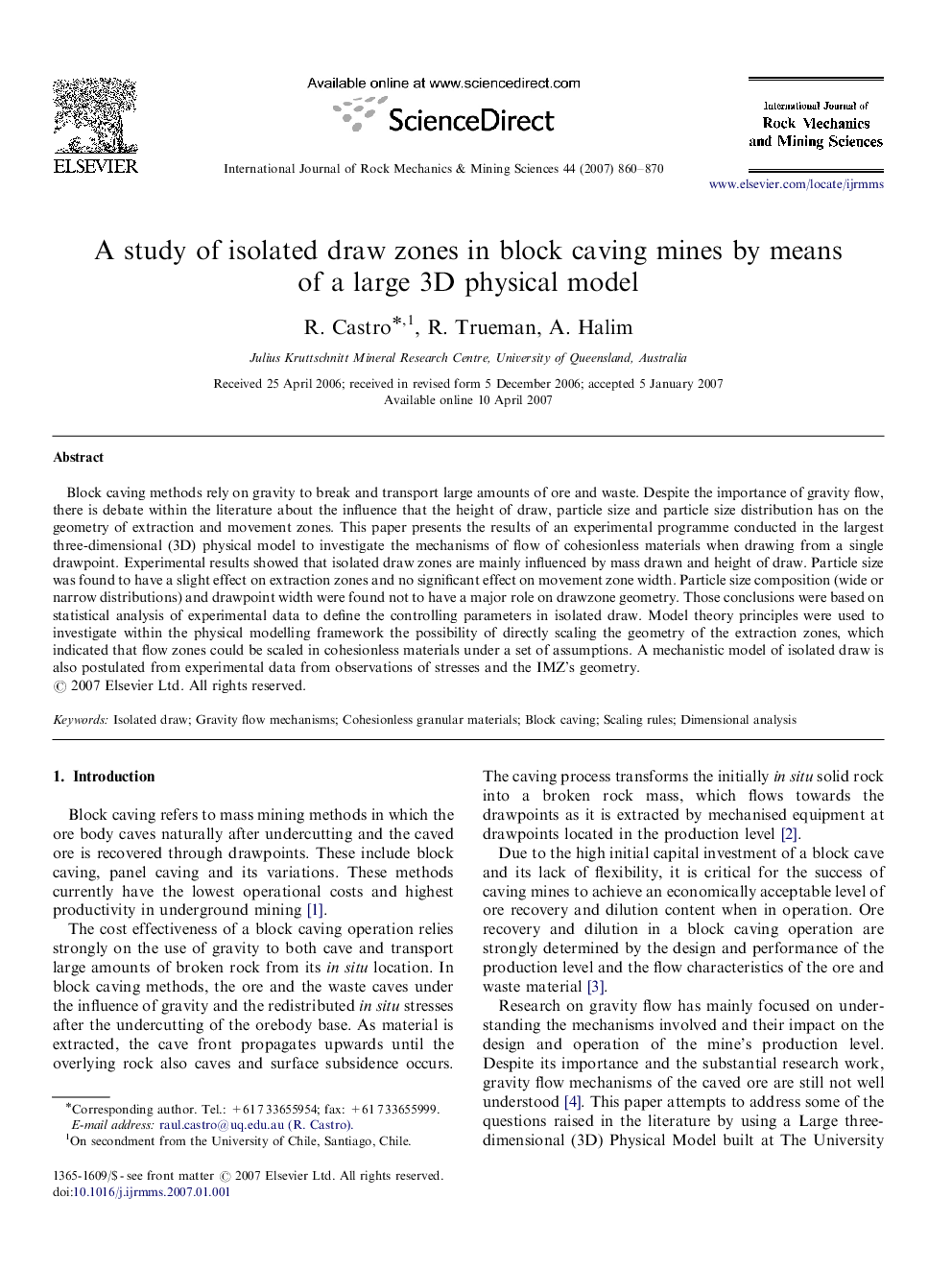| Article ID | Journal | Published Year | Pages | File Type |
|---|---|---|---|---|
| 810313 | International Journal of Rock Mechanics and Mining Sciences | 2007 | 11 Pages |
Block caving methods rely on gravity to break and transport large amounts of ore and waste. Despite the importance of gravity flow, there is debate within the literature about the influence that the height of draw, particle size and particle size distribution has on the geometry of extraction and movement zones. This paper presents the results of an experimental programme conducted in the largest three-dimensional (3D) physical model to investigate the mechanisms of flow of cohesionless materials when drawing from a single drawpoint. Experimental results showed that isolated draw zones are mainly influenced by mass drawn and height of draw. Particle size was found to have a slight effect on extraction zones and no significant effect on movement zone width. Particle size composition (wide or narrow distributions) and drawpoint width were found not to have a major role on drawzone geometry. Those conclusions were based on statistical analysis of experimental data to define the controlling parameters in isolated draw. Model theory principles were used to investigate within the physical modelling framework the possibility of directly scaling the geometry of the extraction zones, which indicated that flow zones could be scaled in cohesionless materials under a set of assumptions. A mechanistic model of isolated draw is also postulated from experimental data from observations of stresses and the IMZ's geometry.
